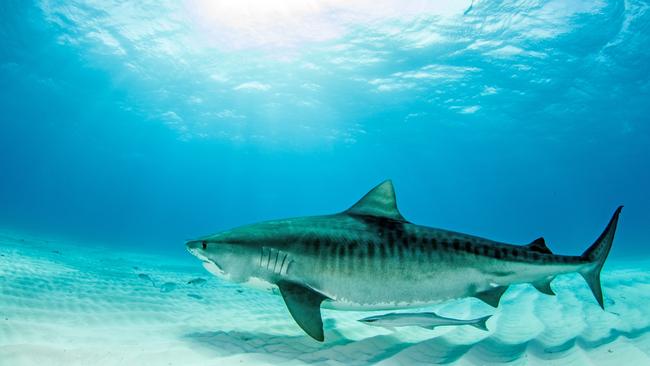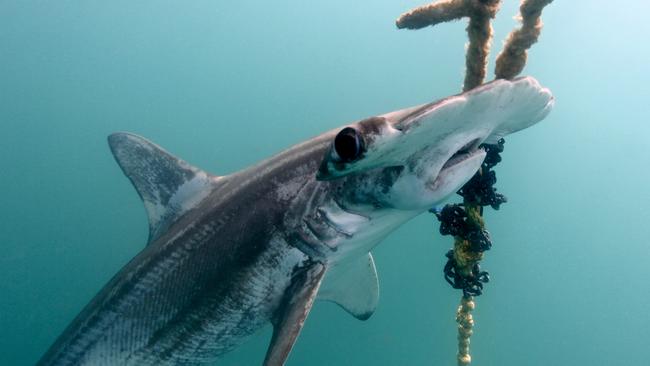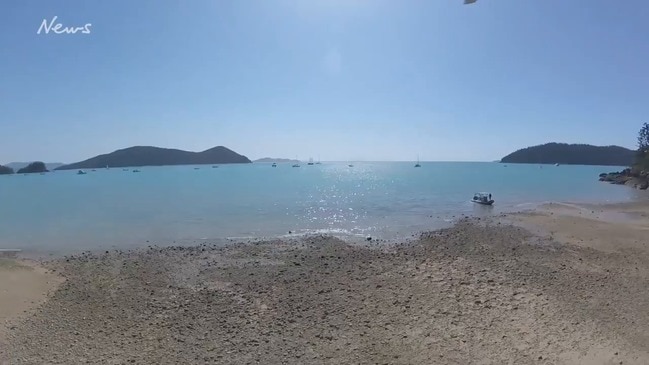Should we cull sharks or is there another way to keep people safe?
AFTER two shark attacks in the space of 24 hours in Queensland, debate is raging about the best method to keep people safe. Peter Gleeson and Lawrence Chlebeck give their views on what must be done. VOTE IN OUR POLL.

QLD News
Don't miss out on the headlines from QLD News. Followed categories will be added to My News.
- Video: Mercy dash to shark victim, 12
- Emergency doc in right place at right time
- Not safe to go back in the water
AFTER two shark attacks in the space of 24 hours in Queensland’s iconic Whitsundays region, debate is raging about the best method to keep people safe.
Sky News presenter Peter Gleeson and Humane Society International’s Lawrence Chlebeck give their views on what must be done.
HUMANS MUST COME FIRST
SHARKS are a menace to humans and they should be either culled at popular tourist spots or safety nets and drum lines established to protect swimmers.
Let’s not pussyfoot around on this issue.
Are we about putting the safety of humans first or do we protect the sharks and foster an environment where they are free to roam the seas and kill or maim people?
Not content with trying to destroy our farming and racing industries, zealotry Green activists are now putting humans last in the shark debate.
And don’t give me this puerile argument that it’s their domain and they were there first and it’s your fault if you are hurt by a shark because you shouldn’t be inserting yourself into their domain.

If as humans we adopted that attitude over the past six million years, we’d still be in the caves eating raw meat.
Humans have always been creative and inventive in the way we’ve advanced and protected ourselves.
If we’ve got the technology, why wouldn’t we protect ourselves from shark attack?
If you look at the Gold Coast — Australia’s tourist capital with a pristine 42km stretch of coastline — there has not been a fatal shark attack there in 60 years.
That just so happens to coincide with a decision by the local council to put shark nets up and deploy baited drum lines, which catch big sharks.
In northern NSW, from Ballina to Kingscliff, remembering this is just south of the Gold Coast, there have been eight fatalities in the past 20 years.
In 2015, the NSW North Coast had half of all unprovoked shark attacks in Australia, including one death and three injuries.
The fact that northern NSW does not have shark nets demonstrates that netting works. Another example where the NSW Government has been captured by the Greens.
Northern NSW is rich in hard-bitten conservationists.
Its local council is dominated by the Greens. Simply put, it places sharks before humans.
And therein lies the rub for popular seaside townships reliant upon tourists to boost the economy.

If you are fair dinkum about tourism, you should have a zero tolerance approach to shark attacks.
Since 1995, 34 people across Australia have died from shark attacks, an average of between one and two people per year.
In those areas where the attacks have occurred, there is no doubt holiday-maker numbers have declined off the back of the resultant publicity.
You can bet your last dollar that tourists — particularly international travellers — will think twice about booking a holiday in the Whitsundays after two attacks within 24 hours.
CNN and the British tabloids have been all over this story.
Popular Whitsundays MP Jason Costigan is justifiably worried about the impact on tourism, just 18 months after Cyclone Debbie.
He fully supports drum lines being deployed, baited up and sharks caught.
Professional Whitsundays fisherman Ron Brennan posted this on Mr Costigan’s Facebook page: “Jason, in 30 years of fishing I have never seen so many sharks the last two nights … they have destroyed my net … the area I am fishing never used to catch many.’’
It’s chilling stuff. We need a comprehensive shark culling program in Queensland, using the Gold Coast model as the template.
We cannot let Greenies hijack this debate.
MORE EFFECTIVE METHODS EXIST
HUMANE Society International was shocked and saddened by the news out of the Whitsundays this week.
First and foremost in our hearts and minds is the welfare of Justine Barwick, the 12-year-old girl and each of their families who have been subjected to a most horrific ordeal.
We applaud the quick and decisive action of those on the scene, as well as emergency responders who applied critical first aid to the victims.
These are truly tragic accidents and any reference to the rarity of shark bites will provide no solace to the victims and their families, yet rare they remain.

We acknowledge the necessity to reduce the already low frequency of such incidents, and we acknowledge the government’s role in enacting shark control measures.
Our issue is with the methods of shark control used by the Queensland Government.
Culling is an ineffective way to reduce shark bites.
According to Queensland Fisheries, the Shark Control Program is meant to minimise shark attacks by culling to reduce local shark populations.
Despite this, 14 shark bites have occurred within the vicinity of shark nets and/or baited drumlines in Queensland since 2001.

Baited drumlines could even attract sharks.
Culling only provides a false sense of security, which can be very dangerous as people may enter the water in hazardous circumstances, believing they are protected by the presence of nets or drumlines.
Culling indiscriminately catches and kills marine life.
Data provided by the Shark Control Program revealed the deaths of 76 dolphins, 155 rays and 14 turtles from 2009-20142.
In addition, 4,764 non-target sharks have been caught on QLD drumlines since 2013.
The cost of wildlife for this false-sense of security is very high.
The death of sharks through culling has a negative impact on ocean ecology.

Sharks are top predators in the ocean, maintaining the delicate balance in marine ecosystems. Removing sharks tips that balance, jeopardising ecosystem health and in turn, fishing and tourism livelihoods.
There are more effective, nonlethal alternatives to culling.
Recent studies from Flinders University and the University of Western Australia document the effectiveness of personal shark deterrents.
In addition, aerial spotters, drone surveys, education and technology-driven alert systems all have a role to play in protecting human lives in the ocean.
We do not value anything over human lives.
But we simply ask, when more effective, nonlethal shark control alternatives exist, why isn’t the Queensland government giving them serious consideration?

Originally published as Should we cull sharks or is there another way to keep people safe?


